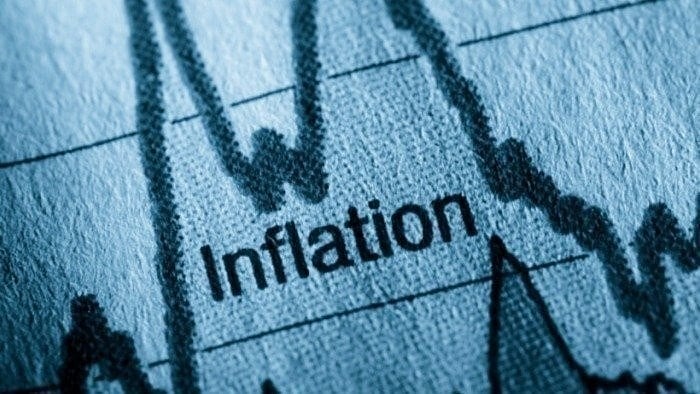
Representative image showing an illustration of inflation graph.
Credit: iStock Photo
The trajectory of Consumer Price Index (CPI)-based inflation, after moving up for years, has been on a downward trend in the past few months. The retail inflation rate fell to an eight-year low of 1.55 per cent in July, mainly because of the fall in food prices, including prices of vegetables and pulses, and a favourable base effect. In July 2024, the rate was 3.6 per cent.
Food inflation was in negative territory year on year. It is likely to remain low in the coming months because of a good monsoon and healthy agricultural activity. The reservoir levels are at the optimum, and projections for the kharif output are good. This will help in the stabilisation of prices. All this has kept inflation within the Reserve Bank of India (RBI)’s comfort zone of 2 per cent to 6 per cent.
Core inflation, which excludes food and fuel prices, was at 4.1% in July. It showed a decline from 4.4 per cent in the previous month, but was above the RBI’s target of 4 per cent. In the case of other categories of consumption, inflation remained at or near the June levels.
It was flat at 2.4 per cent for pan, tobacco, and intoxicants and at the previous month’s levels for clothing and footwear. The fuel and light category saw an uptick from 2.5 per cent to 2.7 per cent. The overall picture is one of stability, and the prices may not pose any serious concern soon. But the situation may not remain the same in the medium term. The RBI has predicted that inflation is likely to pick up from January 2026. If the country has to shift from Russian oil because of pressure from the US, it will have an impact on inflation.
While the inflation trends are not a cause for major worry at the moment, growth prospects do not give much comfort. The RBI has estimated a 6.5% growth for the financial year, but it has also said that uncertain global circumstances may have an impact. The tariff war is certain to affect growth in some sectors.
The Index of Industrial Production was at a 10-month low in July, and other indicators like tax collections are not very positive. Low inflation has created an environment where the government can act to further growth. India cannot sustain growth based on public expenditure anymore. Private investment is sluggish, and demand is weak. The government has to address these issues to provide momentum for growth, or even to sustain the present growth levels in adverse circumstances.
